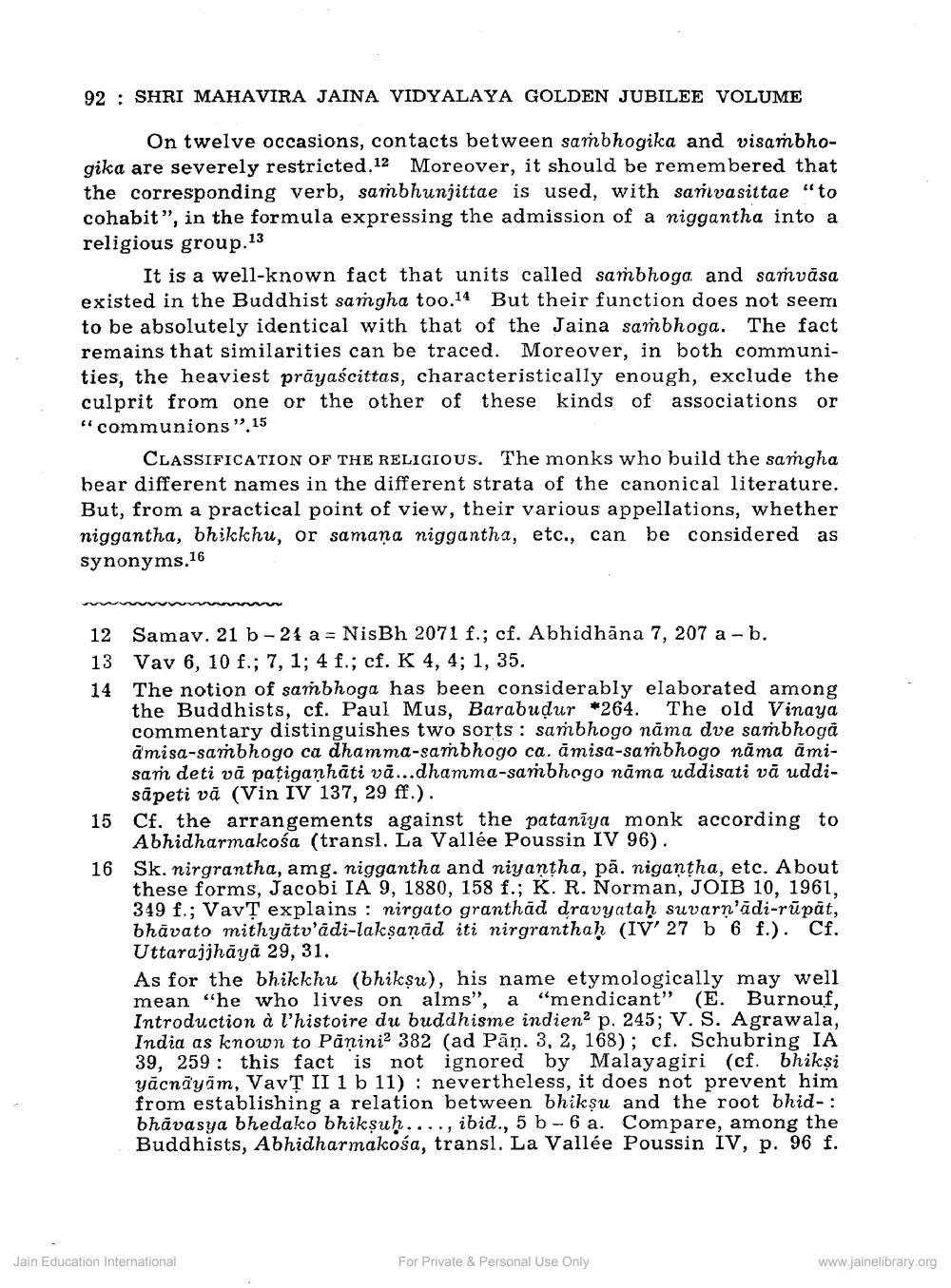Book Title: Religious Prayascittas according to old Jaina Ritual Author(s): Collete Caillat Publisher: Z_Mahavir_Jain_Vidyalay_Suvarna_Mahotsav_Granth_Part_1_012002.pdf and Mahavir_Jain_Vidyalay_Suvarna_ View full book textPage 5
________________ 92 : SHRI MAHAVIRA JAINA VIDYALAYA GOLDEN JUBILEE VOLUME On twelve occasions, contacts between sambhogika and visambhogika are severely restricted.12 Moreover, it should be remembered that the corresponding verb, sambhunjittae is used, with sarvasittae "to cohabit”, in the formula expressing the admission of a niggantha into a religious group.13 It is a well-known fact that units called sambhoga and saívása existed in the Buddhist samgha too.14 But their function does not seem to be absolutely identical with that of the Jaina sambhoga. The fact remains that similarities can be traced. Moreover, in both communities, the heaviest prāyascittas, characteristically enough, exclude the culprit from one or the other of these kinds of associations or "communions". 15 CLASSIFICATION OF THE RELIGIOUS. The monks who build the samgha bear different names in the different strata of the canonical literature. But, from a practical point of view, their various appellations, whether niggantha, bhikkhu, or samaņa niggantha, etc., can be considered as synonyms. 16 12 Samav. 21 b - 24 a = NisBh 2071 f.; cf. Abhidhāna 7, 207 a - b. 13 Vav 6, 10 f.; 7, 1; 4 f.; cf. K 4, 4; 1, 35. The notion of sambhoga has been considerably elaborated among the Buddhists, cf. Paul Mus, Barabudur *264. The old Vinaya commentary distinguishes two sorts : sambhogo nāma dve sambhoga amisa-sambhogo ca dhamma-sambhogo ca. āmisa-sambhogo nāma āmisam deti vā pațiganhāti vā...dhamma-sambhogo nāma uddisati vā uddi såpeti vã (Vin IV 137, 29 ff.). 15 Cf. the arrangements against the pataniya monk according to Abhidharmakośa (transl. La Vallée Poussin IV 96). Sk. nirgrantha, amg. niggantha and niyantha, pā. nigantha, etc. About these forms, Jacobi IA 9, 1880, 158 f.; K. R. Norman, JOIB 10, 1961, 349 f.; Vavt explains : nirgato granthad dravyataḥ suvarn'ādi-rūpāt, bhāvato mithyātv'ādi-laksanad iti nirgranthaḥ (IV' 27 b 6 f.). Cf. Uttarajjhāyā 29, 31. As for the bhikkhu (bhikṣu), his name etymologically may well mean "he who lives on alms", a "mendicant" (E. Burnouf, Introduction à l'histoire du buddhisme indien2 p. 245; V. S. Agrawala, India as known to Panini? 382 (ad Pāņ 3, 2, 168); cf. Schubring IA 39, 259: this fact is not ignored by Malayagiri (cf. bhikṣi yācnāyām, VavT II 1 b 11): nevertheless, it does not prevent him from establishing a relation between bhiksu and the root bhid-: bhavasya bhedako bhikṣuh...., ibid., 5 b-6a. Compare, among the Buddhists, Abhidharmakośa, transl. La Vallée Poussin IV, p. 96 f. à l'ho Panini2 382 anored by it does not preve Whid-: this fact 16 11): nevesveen bhikṣu anompare, among . f. ing a relation., ibid., 5 ballée Poussin Jain Education International For Private & Personal Use Only www.jainelibrary.orgPage Navigation
1 ... 3 4 5 6 7 8 9 10 11 12 13 14 15 16 17 18 19 20 21 22 23 24 25 26 27 28 29 30
